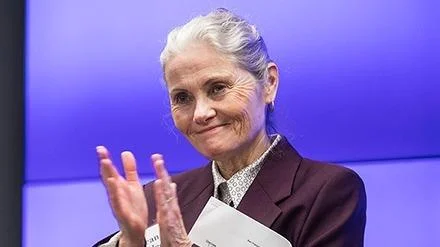Kathleen Hagerty Provost | Northwestern University
Astrophysicist Pieter van Dokkum will join Northwestern University as the Kimberly Querrey Professor of Astrophysics in the Department of Physics and Astronomy at the Weinberg College of Arts and Sciences. The university announced that van Dokkum, currently a professor at Yale University, will begin his new role on January 1, 2027. He will also become a member of Northwestern’s Center for Interdisciplinary Exploration and Research in Astrophysics (CIERA).
Van Dokkum is recognized for his work on galaxy formation and evolution, as well as for developing new astronomical instruments. His research has challenged traditional ideas about how galaxies form and change over time.
“I am thrilled to have Professor van Dokkum, one of the world’s leading astrophysicists, join Northwestern,” said President Henry S. Bienen. “He will immediately elevate our already groundbreaking research in Weinberg College and CIERA and will create new and exciting opportunities for our students and scholars who are working to better understand our universe. This is a wonderful day for our university.”
The professorship was established through a gift from University Trustee Kimberly K. Querrey, who has supported several major research initiatives at Northwestern across various scientific fields.
“Kimberly Querrey is a visionary advocate for interdisciplinary research, and her generosity has fueled innovation, advanced scholarship and enriched education across a broad spectrum of initiatives at Northwestern,” Bienen said. “We are profoundly grateful for her extraordinary commitment to expanding the frontiers of knowledge and fostering progress across science and technology.”
Querrey has contributed to projects such as biomedical research centers, institutes for bioelectronics, regenerative engineering, epigenetics, neurovascular sciences, neurogenetics, cognitive neurology, Alzheimer’s disease research centers, as well as multiple endowed professorships.
“Professor van Dokkum’s appointment reflects Northwestern’s commitment to advancing discovery through bold ideas and world-class talent,” Querrey said. “His groundbreaking work in astrophysics exemplifies how innovation thrives when disciplines intersect. Supporting visionary researchers like Professor van Dokkum strengthens Northwestern’s leadership in science and technology and fuels the kind of collaborative exploration that defines the University’s future.”
Van Dokkum co-developed the Dragonfly Telephoto Array telescope in New Mexico with Canadian astronomer Roberto Abraham. The array uses 48 commercially available lenses inspired by dragonfly eyes to detect faint light from galaxies’ outer regions—areas difficult to observe with standard telescopes.
With this instrument, van Dokkum discovered large galaxies with few stars and some without dark matter—a finding that challenges previous assumptions about galaxy composition.
Currently, van Dokkum's team is upgrading their telescope system to include more than 1,100 lenses equipped with interference filters in Chile's Atacama Desert. This new project is called the Modular Optical Telephoto Hyperspectral Robotic Array (MOTHRA) and aims to help astronomers detect features such as the Cosmic Web—networks thought to connect all galaxies.
“I am greatly looking forward to joining the Northwestern community and CIERA,” van Dokkum said. “CIERA’s collaborative, cross-disciplinary culture is a great environment for discovery, and I’m excited to bring the Dragonfly Telephoto Array and the new MOTHRA telescope into that ecosystem. Combined with CIERA’s access to the W.M. Keck Observatory and partnership with the upcoming Giant Magellan Telescope, Northwestern students and postdocs will be at the frontiers of mapping the faint universe.”
Adrian Randolph, dean of Weinberg College of Arts & Sciences added: “Pieter van Dokkum’s arrival is the culmination of extensive collaborations with many partners at Northwestern. His pioneering scholarship in astrophysics exemplifies the bold, interdisciplinary spirit that drives discovery across our College and University. His creativity and collaborative energy will elevate our scientific enterprise and open new frontiers of exploration.”
Van Dokkum has led projects using NASA's Hubble Space Telescope where he helped find a supermassive black hole ejected from its galaxy center; he also used data from NASA's James Webb Space Telescope (JWST) showing star-filled galaxies may have formed earlier than previously believed.
“We are ecstatic to welcome Pieter to our community,” said Vicky Kalogera, director of CIERA at Weinberg College. “His arrival marks an exciting moment for Northwestern... A scientific leader whose creativity and bold ideas have reshaped how we study galaxies... As CIERA continues to grow... his presence will be instrumental — both in advancing our science and in guiding the center’s future.”
Provost Kathleen Hagerty commented: “We are delighted to welcome Professor van Dokkum... His arrival strengthens the University’s foundation in pursuit of knowledge that reveals secrets of our universe in exciting ways.”
In addition to his research contributions—including nearly 790 publications—van Dokkum has been recognized as an educator at Yale where he received mentoring awards for supporting graduate students’ development.
He holds a Ph.D. from University of Groningen (Netherlands) along with several honors such as medals from international astronomical societies.

